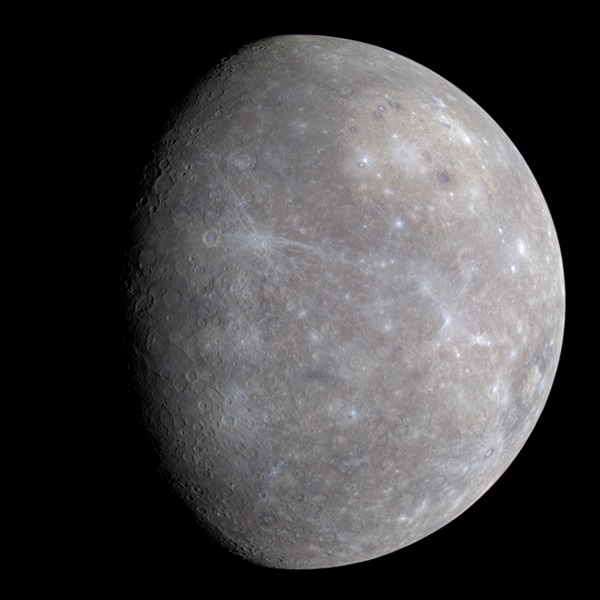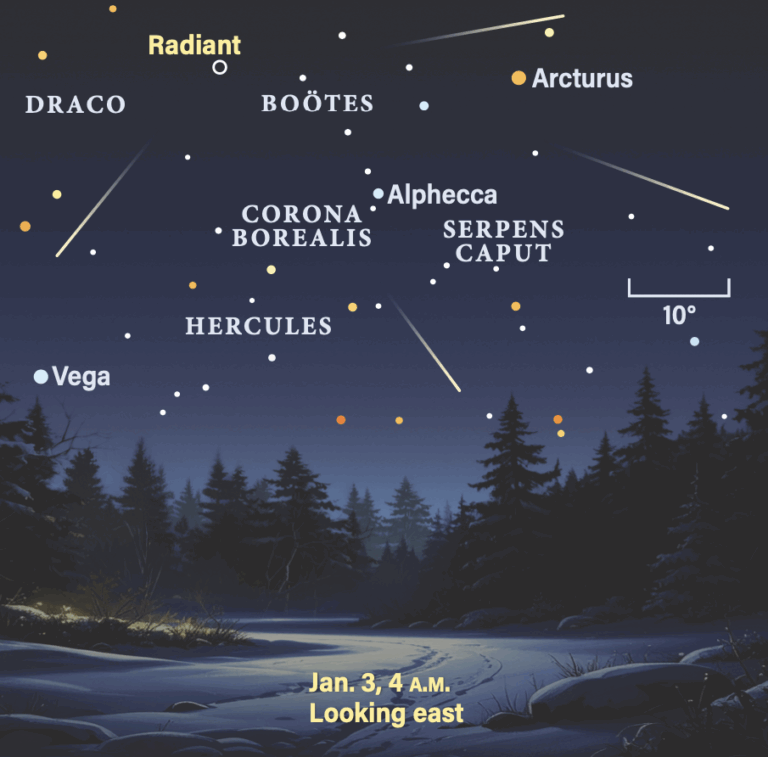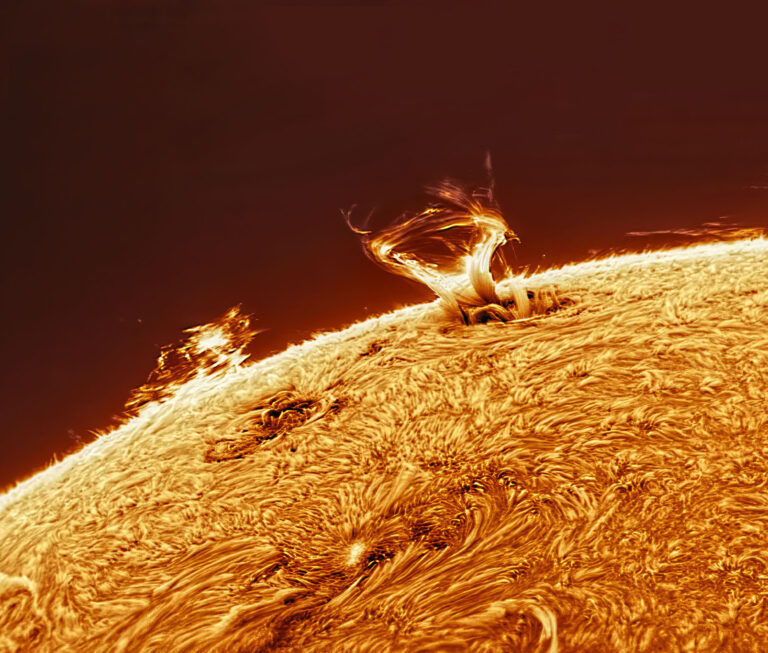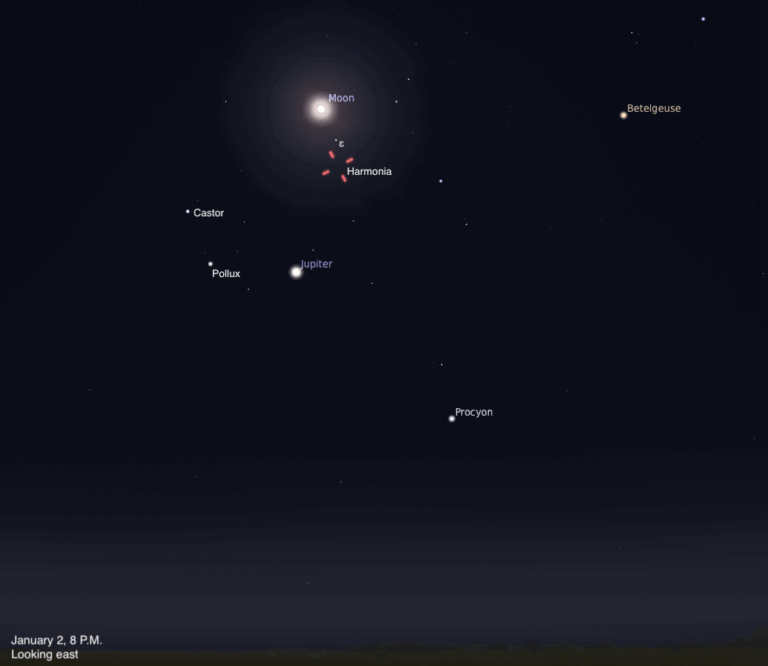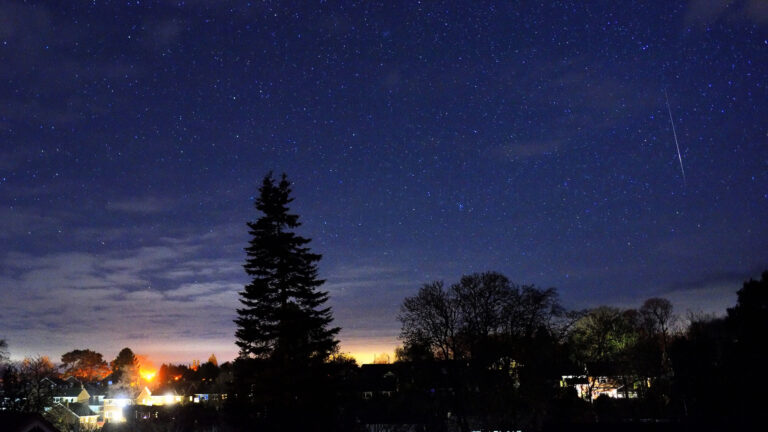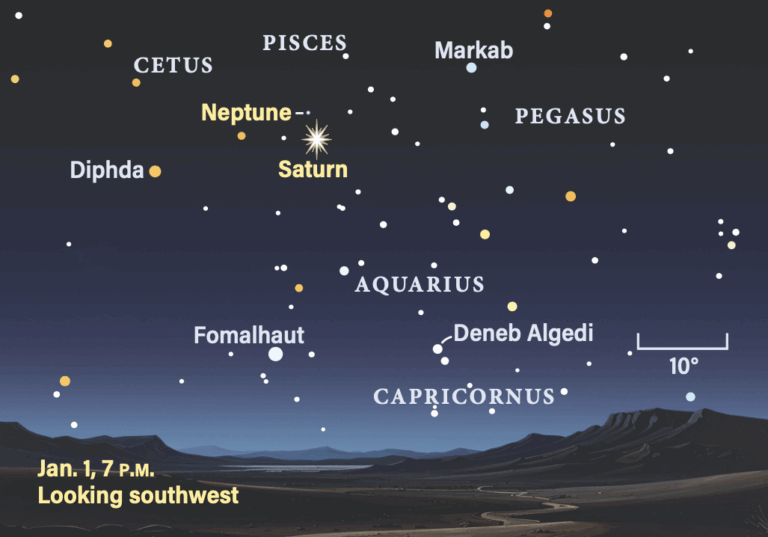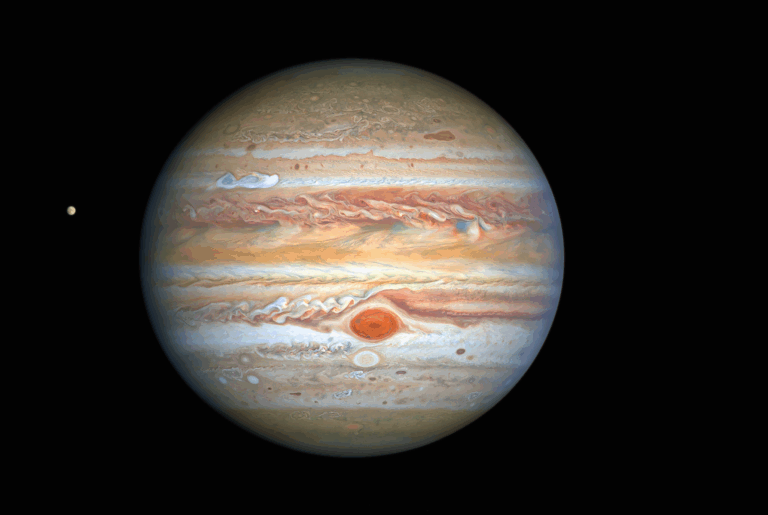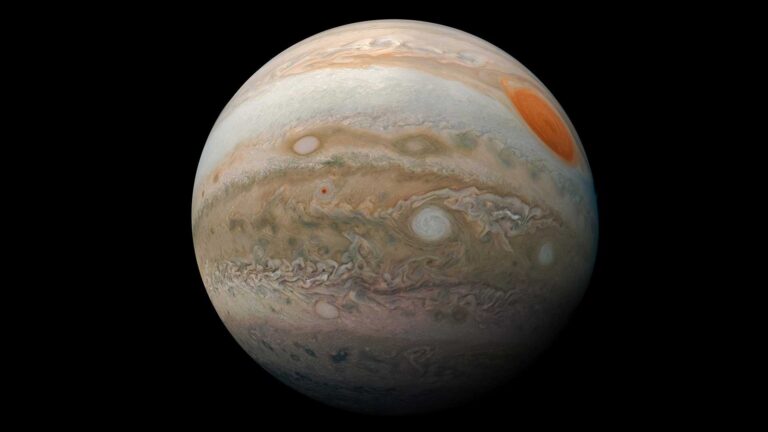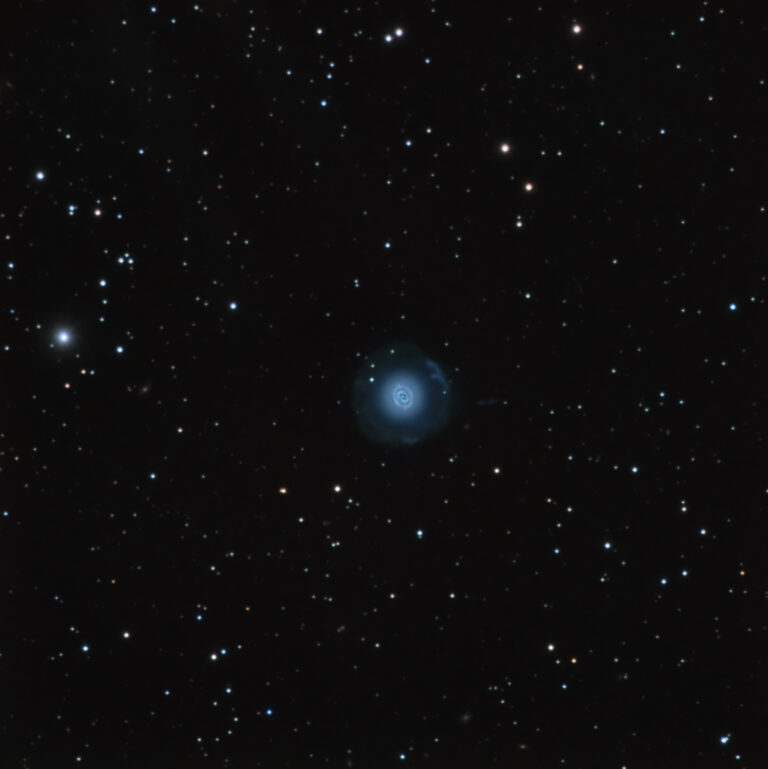Key Takeaways:
Friday, July 21
Evenings this week are a great time to explore the constellation Sagittarius the Archer. This star group lies due south and at peak altitude shortly after 11 p.m. local daylight time, well after the last vestiges of twilight have faded away. The brightest stars within the constellation form the shape of a teapot — a distinctive asterism once you’ve found it. The central regions of the Milky Way pass through Sagittarius, so it’s always worth exploring this area through binoculars or a telescope.
The Moon reaches perigee, the closest point in its orbit around Earth, at 1:12 p.m. EDT. It then lies 224,462 miles (361,236 kilometers) from Earth’s center.
Saturday, July 22
Spectacular Saturn lies due south and at its peak altitude as the last vestiges of twilight fade away. It shines at magnitude 0.2 against the backdrop of southern Ophiuchus, a constellation whose brightest star glows six times fainter than the ringed planet. When viewed through a telescope, Saturn’s globe measures 18″ across while its dramatic ring system spans 41″ and tilts 27° to our line of sight.
Sunday, July 23
New Moon occurs at 5:46 a.m. EDT. At its New phase, the Moon crosses the sky with the Sun and so remains hidden by our star. But that won’t be the case the next time our satellite completes an orbit of Earth. On August 21, the New Moon will pass directly in front of our star, bringing a total solar eclipse to millions of observers across the United States from Oregon to South Carolina. The rest of the country will experience a partial eclipse, though viewers should try their best to get into the path of totality.
Pluto reached the peak of its 2017 appearance earlier this month, and it remains a tempting target for those with an 8-inch or larger telescope. The 14th-magnitude world is visible all night among the background stars of northeastern Sagittarius, some 1.5° east-southeast of 3rd-magnitude Pi (p) Sagittarii. See “In pursuit of Pluto” in the July Astronomy for complete details on finding this world.
Monday, July 24
Grab your binoculars and scan just above the western horizon after sunset. There you’ll find three bright objects that fit in a single field of view. Mercury will be the easiest to see. It shines at magnitude 0.2 and stands about 8° high a half-hour after the Sun goes down. The 1st-magnitude star Regulus in Leo the Lion lies 1° to the planet’s upper left. And a slender crescent Moon just 4 percent lit hangs about 5° to the lower right of the close pair.
Tuesday, July 25
The waxing crescent Moon stands some 8° to the upper left of the Mercury-Regulus pair this evening. Nine percent of Luna’s face appears lit tonight, and the greater illumination combined with the higher altitude make it much easier to see than it was yesterday.
Wednesday, July 26
By the time morning twilight starts to paint the sky, brilliant Venus already dominates the scene. The planet rises around 3 a.m. local daylight time and stands 10° high at the start of twilight an hour later. It’s hard to mistake Venus for anything else — at magnitude –4.0, it shines far brighter than any other object in the morning sky. Although the view with the naked eye or through binoculars is dazzling, you also should point a telescope in the planet’s direction. Not only does Venus show an 15″-diameter disk that appears nearly three-quarters illuminated, but this morning also offers a bonus: The planet lies less than 1° south of the Crab Nebula supernova remnant (M1).
Mars reaches solar conjunction at 9 p.m. EDT, when it lies on the far side of the Sun from our perspective. The Red Planet will remain hidden in our star’s glare until it emerges into morning twilight in September.
Thursday, July 27
As an inner planet, Venus moves quickly relative to the background stars. After passing south of M1 yesterday, this morning the planet appears 0.4° north of the 3rd-magnitude star Zeta (z) Tauri, the southern horn of the constellation Taurus the Bull.
Friday, July 28
The waxing crescent Moon appears about one-third illuminated this evening, when it lies just 3° above brilliant Jupiter. The two lie about 25° high in the southwest an hour after sundown and look spectacular from then until they set after 11 p.m. local daylight time. Although the naked eye and binoculars show this conjunction best, a telescope delivers great views of magnitude –1.9 Jupiter all week. The giant planet’s disk spans 35″ and shows a wealth of detail in its massive atmosphere.
Saturday, July 29
Mercury pops out of the twilight glow this evening as the sky begins to darken. The innermost planet lies 27° east of the Sun tonight, its greatest elongation for this evening apparition (the configuration officially occurs at 1 a.m. EDT on the 30th). Look for it 30 minutes after sunset, when it lies some 8° above the western horizon. The innermost planet should be fairly easy to spot because it shines brightly, at magnitude 0.3. (Use binoculars if you can’t see it with naked eyes.) Through a telescope, Mercury appears 8″ across and slightly less than half-lit.
The Southern Delta Aquarid meteor shower reaches its peak overnight, but meteor rates remain essentially the same from July 27 to August 1. And with the nearly First Quarter Moon setting around midnight local daylight time, early morning viewing conditions should be ideal. The meteors appear to radiate from the constellation Aquarius, which rises in late evening and appears highest in the hours before dawn. At its best, the shower produces 20 to 25 meteors per hour under a dark sky, though the highest rates occur at tropical locations and in the Southern Hemisphere.
Sunday, July 30
First Quarter Moon arrives at 11:23 a.m. EDT. Our satellite won’t rise until around 1:30 p.m. local daylight time, however, so observers in the Americas won’t see it precisely half-lit. As darkness falls this evening, the Moon appears about 55 percent illuminated and resides among the background stars of Libra the Scales.
Venus’ rapid eastward motion relative to the background stars carries it from Taurus the Bull into Orion the Hunter this morning. The planet will reside in this non-zodiacal constellation for only two days, however, and will cross into Gemini the Twins on August 1.


